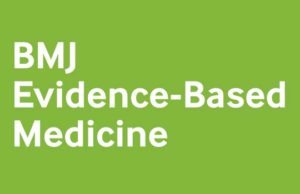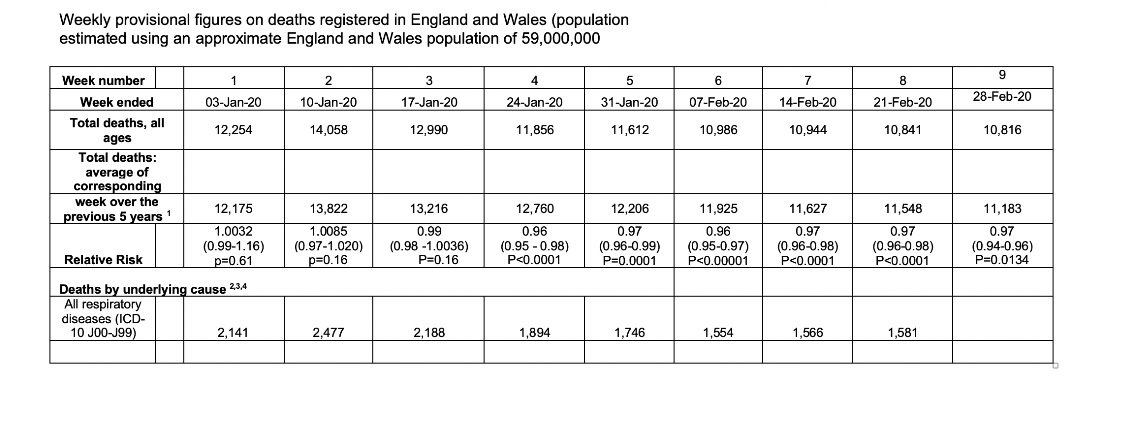On the 31st of December 2019, the coronavirus outbreak in Wuhan, China, was first reported to the World Health Organization. Since then, 118,468 confirmed cases and 4,267 deaths related to Covid-19 have been reported.
The case fatality rates (CFR) vary significantly across countries. In China, the CFR is 3.9% (3136/80761); in Italy it is 6.2% (631/10149). However, testing can introduce a selection bias that significantly overestimates the CFR, particularly if only more severe cases are tested. In South Korea, where wider testing of milder cases has occurred, the CFR is a much lower, 0.77% (58/7513). Italy, however, has tested over 42,000 people. Italy’s ageing population may partially explain the higher CFR: the average age of those who have died in Italy is 81. In China, the CFR for over 80s is nearly 15%.
In an outbreak, understanding the case fatality rate matters. However, the impact on overall rates of death can provide vital information about the effect in the population at large. Essential questions to answer include: are the number of deaths rising? How do they compare with previous years? And in this current outbreak, are the respiratory deaths on the rise?
To answer these questions, the Office for National Statistics provides data on deaths registered weekly in England and Wales. The latest data was released on the 10th March, with data up to week 9, ending 28 February 2020.
In the first nine weeks of the year, all deaths in England and Wales peaked in week 2 at 14,058. By week nine, deaths reduced by 24% to 10,816. The peak in winter of circulatory and respiratory diseases – that cause about half of all deaths – gives rise to the seasonal effect.
Deaths due to all respiratory diseases have decreased by more than a third (36%) from a peak of 2,477 in week two, down to 1,581 by week eight (there is a delay in cause-specific mortality data which can be subject to small variations). ONS data also shows that deaths over the last six weeks have been an average of 3% less than the previous five years (see table).
The direction of this trend now matters. In 2019 the low peak for all deaths was the 31st May when 8,260 deaths occurred; the low point for respiratory disease deaths occurred on the 30th Aug with 854 deaths (nearly two-thirds less than the peak rate of that year).
In the UK, there are currently 456 cases of Covid-19 and eight deaths. The seasonal peak in winter respiratory illnesses has occurred; the normal year on year trend would see a continued downturn in infections and deaths. However, it is too early to tell: the next few weeks will determine whether the trend for a reduction in deaths is maintained, or whether the Covid-19 outbreak takes hold and leads to more infections and rising mortality.
The current data tentatively suggest that public health measures may be impacting on all respiratory deaths—which can only be a good thing. The restoration of public health measures could be a significant force for good. Irrespective of what happens next, they should be maintained. The evidence supports the promotion of simple measures such as hand washing, which significantly impact several respiratory viruses that seasonally kill a lot of people.
 BMJ Evidence-Based Medicine publishes original evidence based research, insights and opinions on what matters for health care. (Instructions for authors)
BMJ Evidence-Based Medicine publishes original evidence based research, insights and opinions on what matters for health care. (Instructions for authors)
Carl Heneghan is the Editor in Chief BMJ EBM and Professor of EBM, Centre for Evidence-Based Medicine in the Nuffield Department of Primary Care Health Sciences, University of Oxford.
Competing interests: CH has received expenses and fees for his media work. He holds grant funding from the NIHR, the NIHR School of Primary Care Research and the NIHR Oxford BRC. CH is also Director of CEBM, which jointly runs the EvidenceLive Conference with the BMJ and the Overdiagnosis Conference with international partners, based on a non-profit making model.
THE ONS data on deaths can be accessed here and will update on the 17th March 2020.
(The Case fatality data in this report is from the 10th March 2020)


